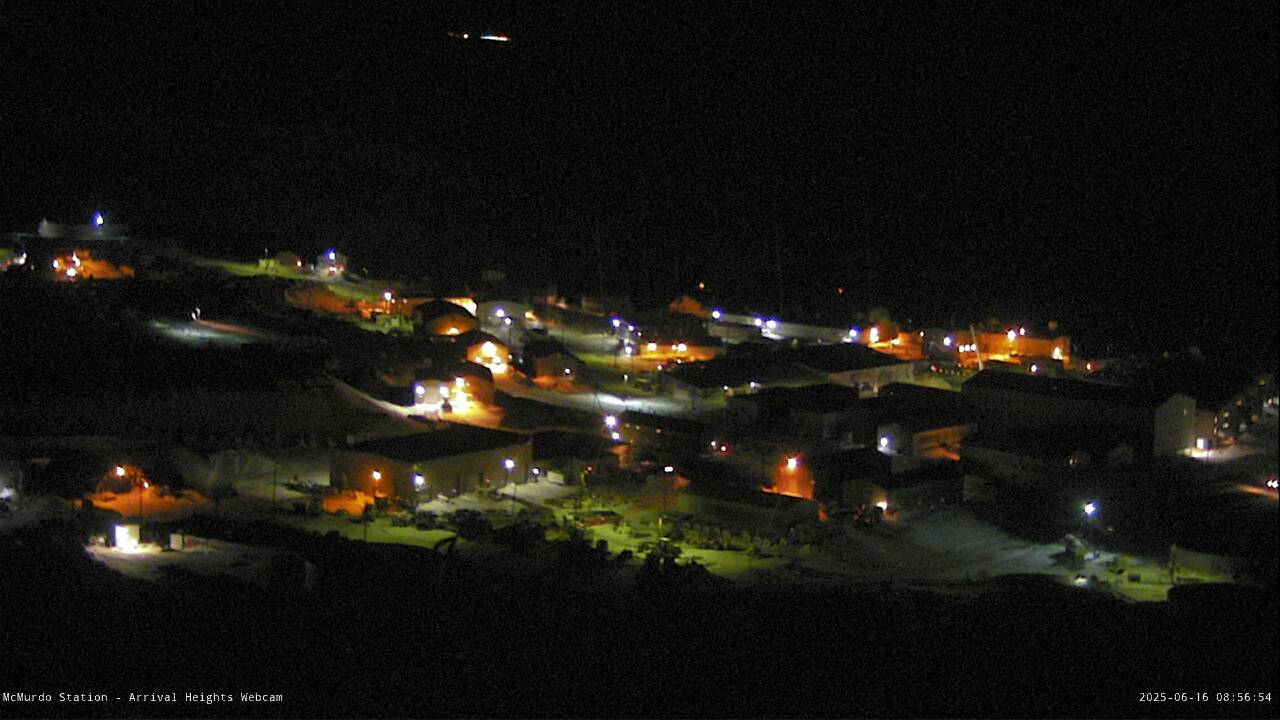The Icy South Pole
"Over 150 different research projects operate out of McMurdo Station every year, and all of them require a tremendous amount of logistical support, everything from moving heavy cargo to supplying food to getting people out to remote corners of the continent."
Michael Lucibella, editor, The Antarctic Sun
"We are living on borrowed time."
"If you designed it [the South Pole station] from scratch, you wouldn't have designed it the way it is [originally built as a Navy camp during the Cold War]."
Kelly K. Falkner, director of polar programs, National Science Foundation
 |
| McMurdo Station webcams USAP Portal |
The South Pole station known as McMurdo Station located in Antarctica is where some of the world's most vital astronomical observatories are located. There is one that has been designed to detect neutrinos, products of violent events taking place in the universe, such as exploding stars. Hundreds of scientist from around the world are welcomed annually to further their studies of collapsing ice caps.
But of course, their studies are far more variously-inclined than just concerns over ice caps melting, serious as that is. Biologists come to study the mating habits of penguins, geologists to try to ferret out some of the history of the Earth's formation, and needless to say, astrophysicists to probe the mysteries of the still-unfathomable, distant and endlessly complex cosmos.
Comprised of a core collection of U.S. Navy huts built sixty years ago, McMurdo Station has developed into a small town, housing over a thousand people during peak observation and study months. It represents the hub of the American Antarctic research program. And it is facing a crisis of existence where the aging, inefficient buildings are due for replacement at a hefty projected cost of hundreds of millions.
The American fleet has one supply ship, and one only in the Polar Star, an aging 40-year-old vessel stationed under the command of the U.S. Coast Guard. A newer ship with the capacity to break heavy sea ice is badly needed. Russia's commitment to the very same type of investments and for similar purposes has seen its fleet of icebreakers expand to 50, several of which are powered by nuclear reactors.
The cost associated with a single, new American icebreaker is in the neighbourhood of $1-billion, funding yet to be allocated by the U.S. Congress. "Anything we get, we squeeze every bit of life out of it", Paul Sheppard, deputy head of Antarctic logistics for the National Science Foundation, stated of the patchwork gracing heavy equipment to keep outdated equipment running past their best-before date.
Using McMurdo as a base, scientists are able to fly out to field camps located deep within the interior of the Antarctic, or to plumb the depths of the ocean and to latch on to helicopters flying to nearby McMurdo Dry Valleys, a region free of ice where for hundreds of millions of years the history of the planet can be seen exposed geologically in the hillsides.
There are over a hundred buildings, from small to large at McMurdo, and their size and placement is beyond inconvenient and inefficient for those who work there. Warehouses, dormitories and edifices with various functions would be combined in larger, taller buildings, as an example of a useful redesign, one which would require less energy and enable greater efficiency for those who labor there.
"We are sprinting out of the starting blocks to build the first heavy icebreaker by 2023", Admiral Paul F. Zukunft, commandant of the Coast Guard, confided optimistically.
Labels: Antarctica, Astronomy, Geology, Research, Science

0 Comments:
Post a Comment
<< Home